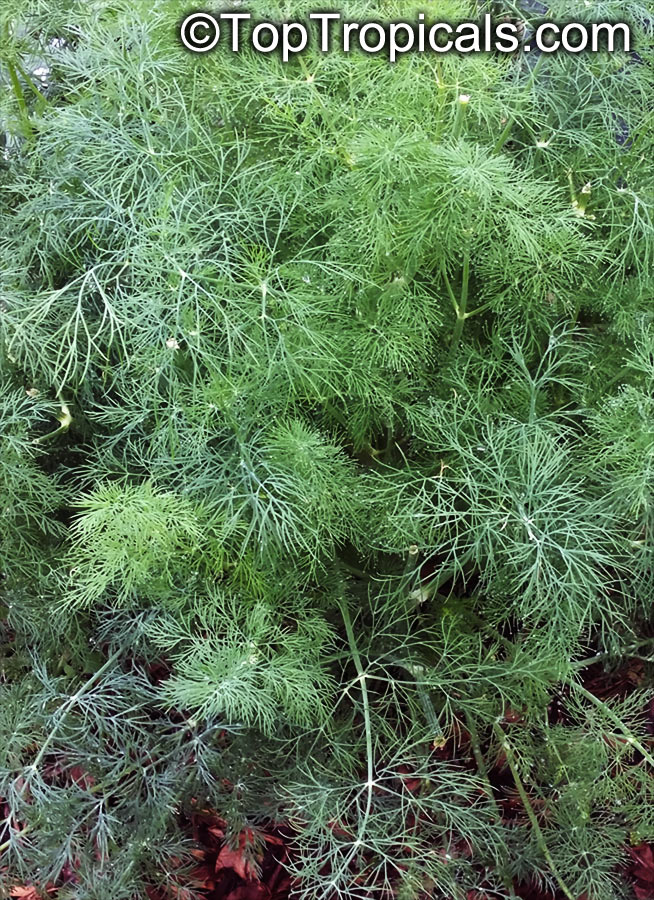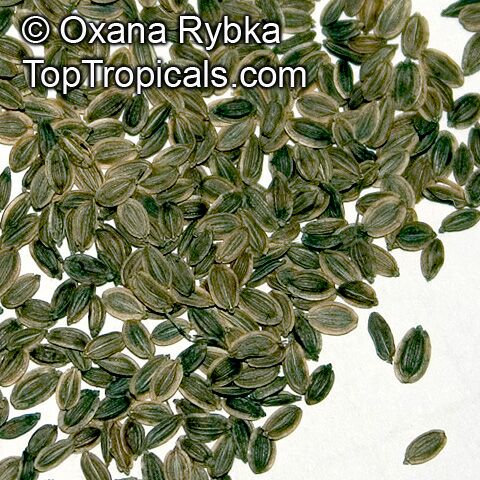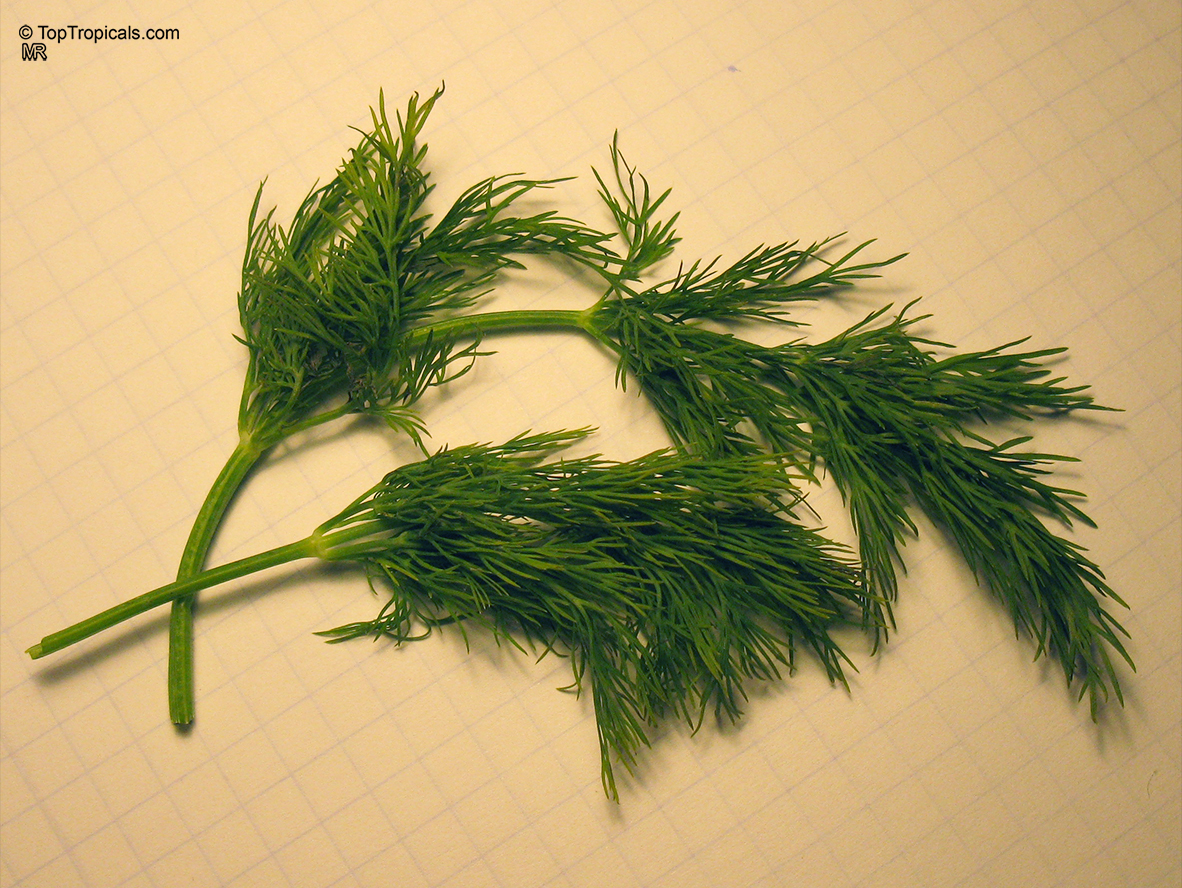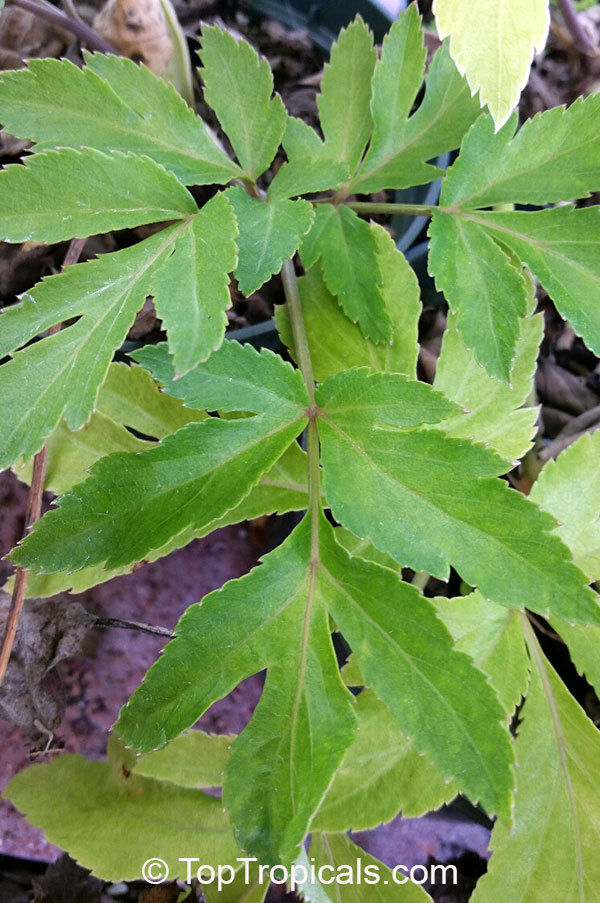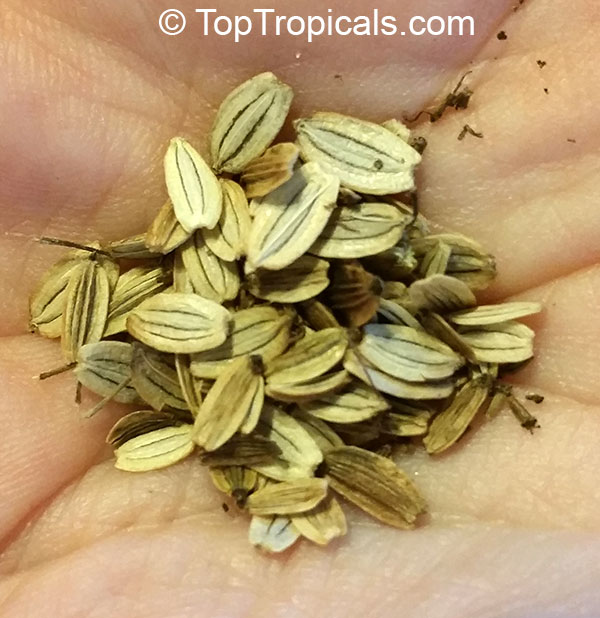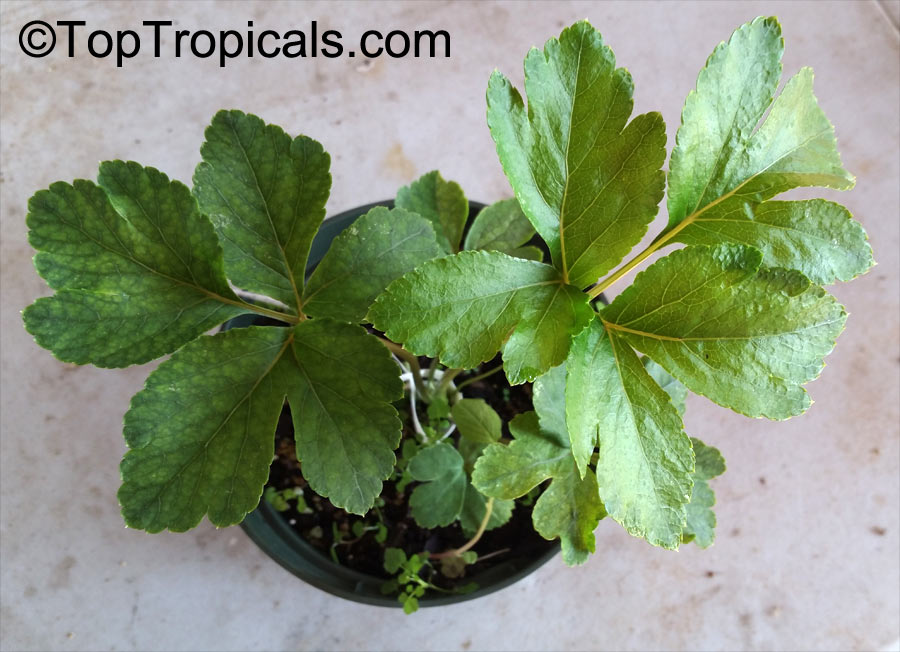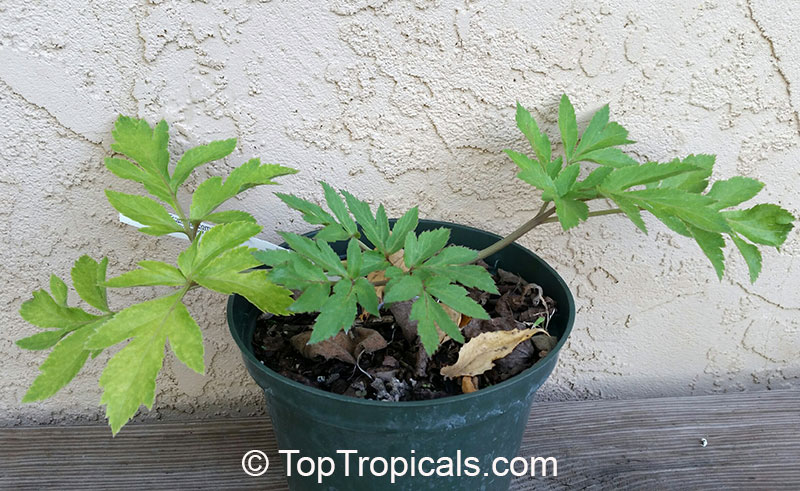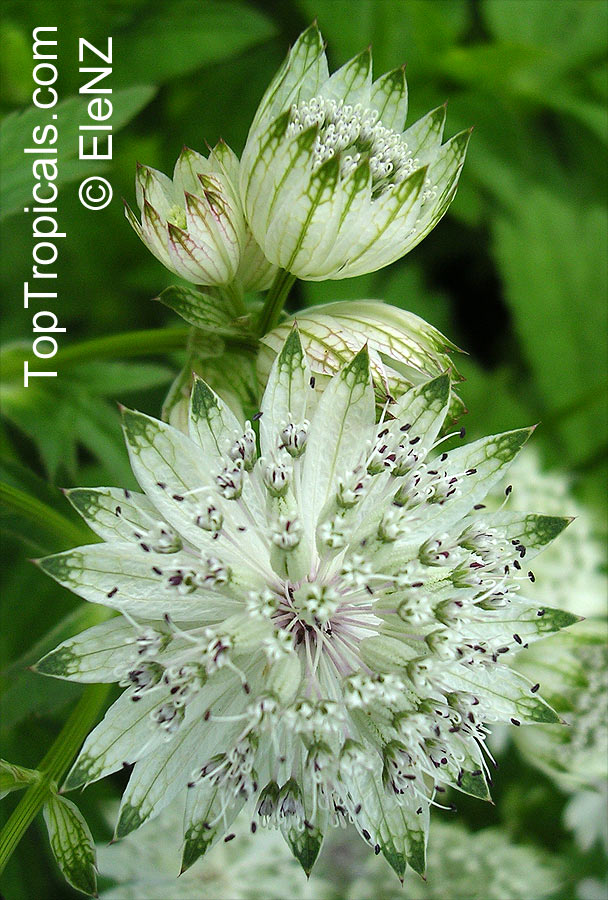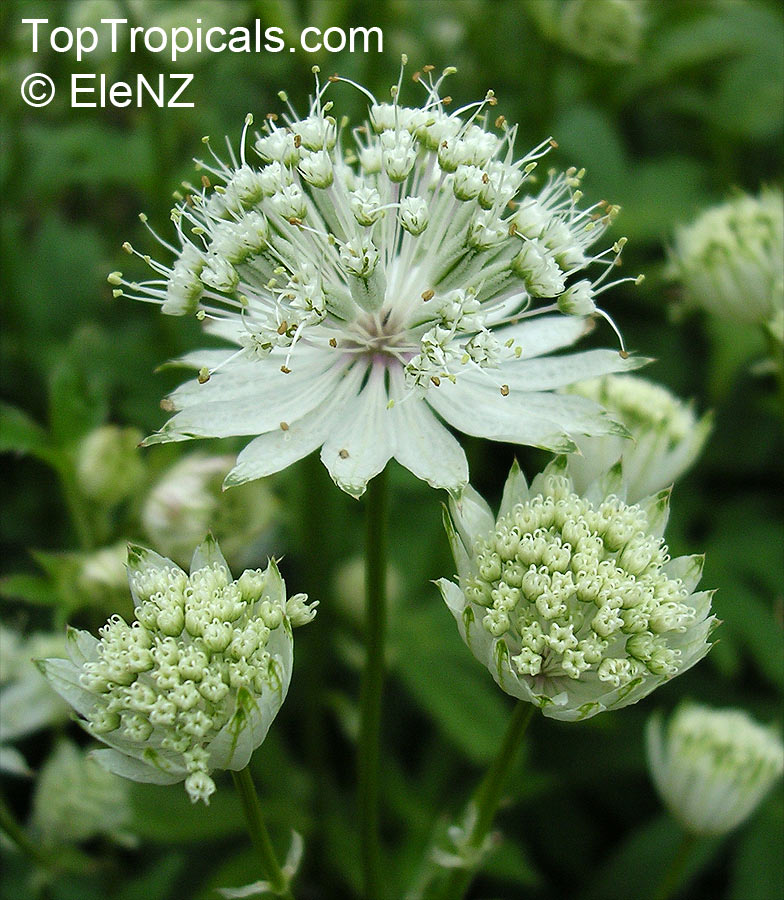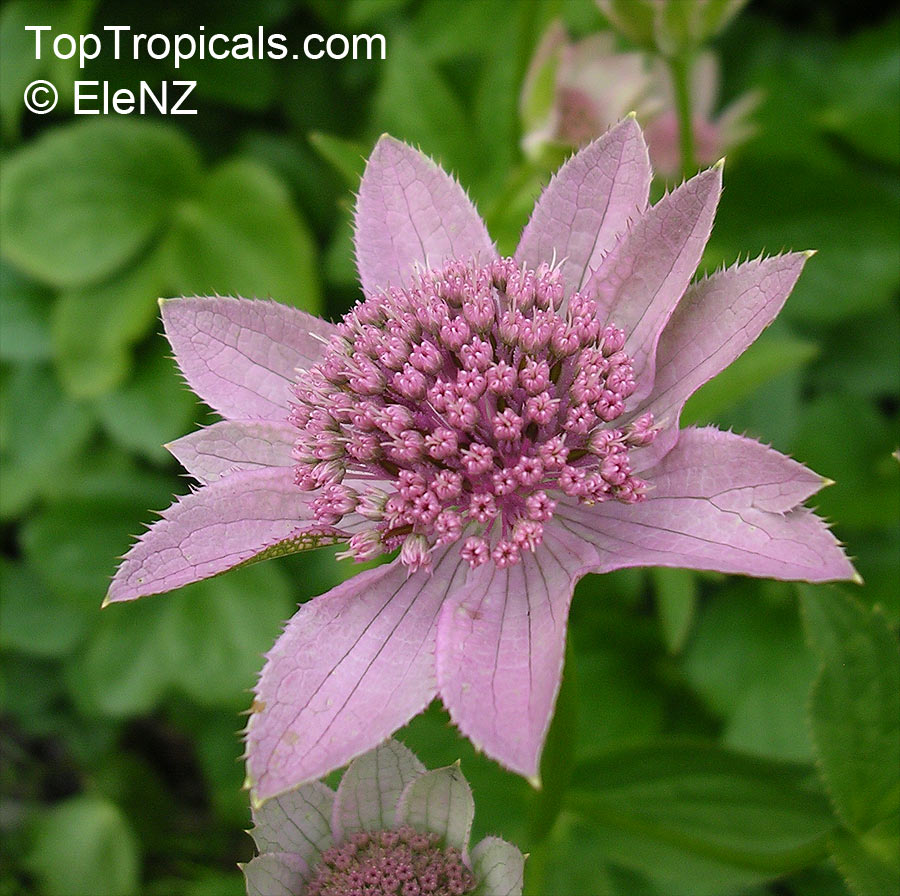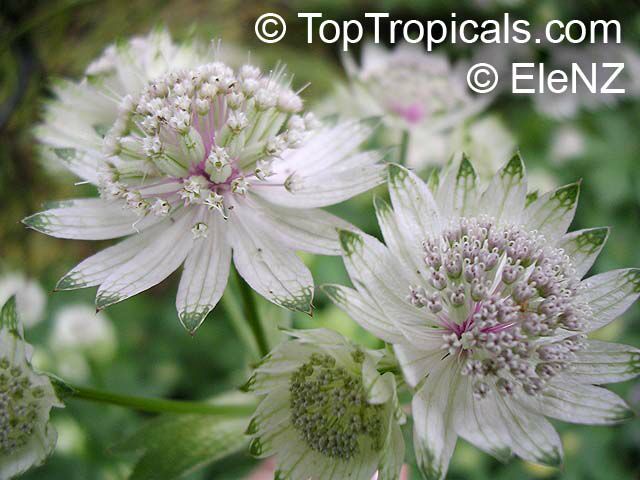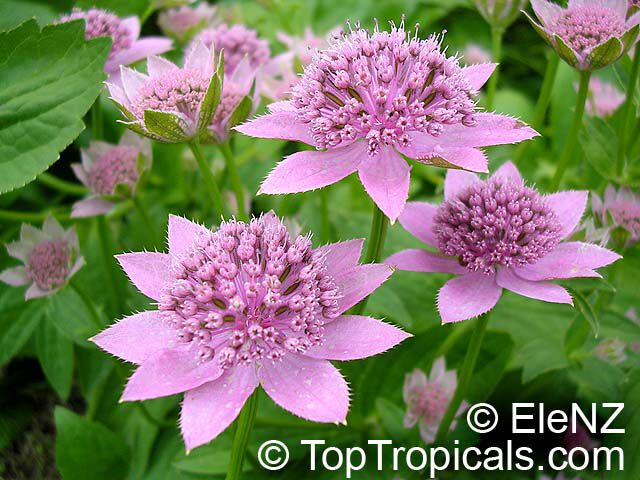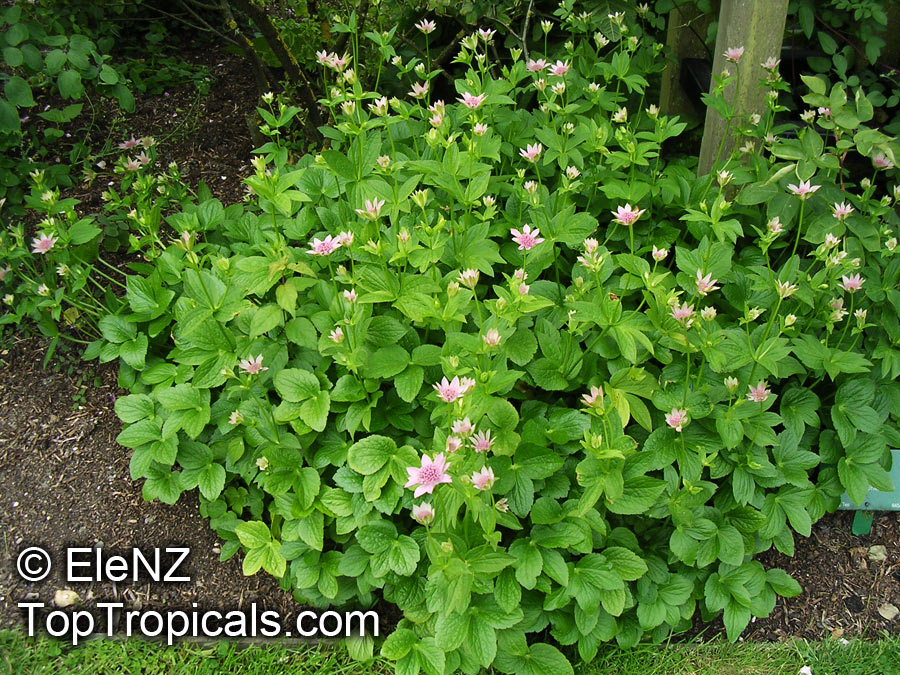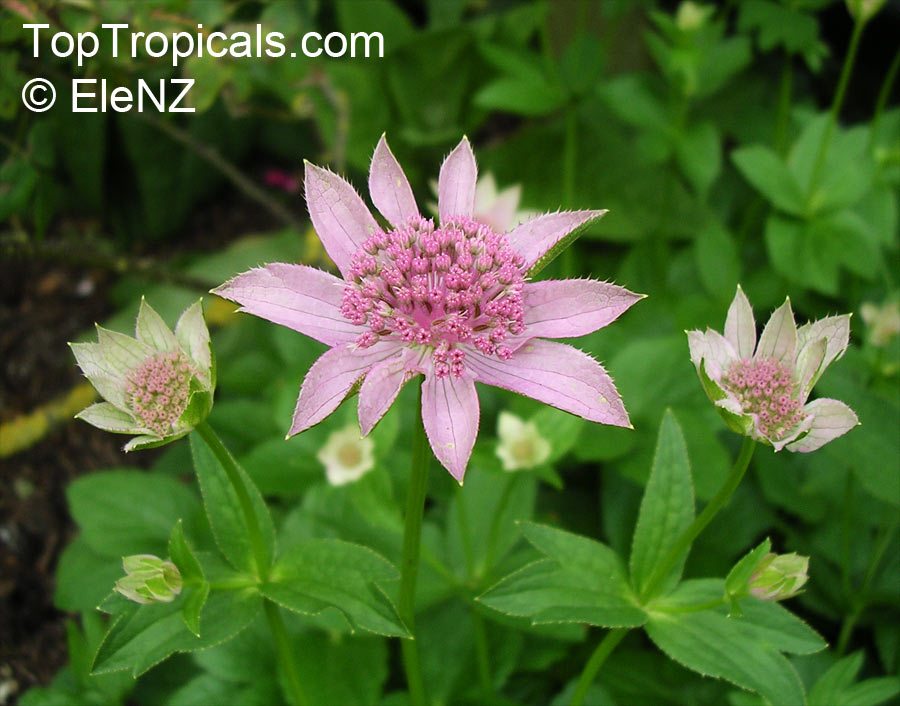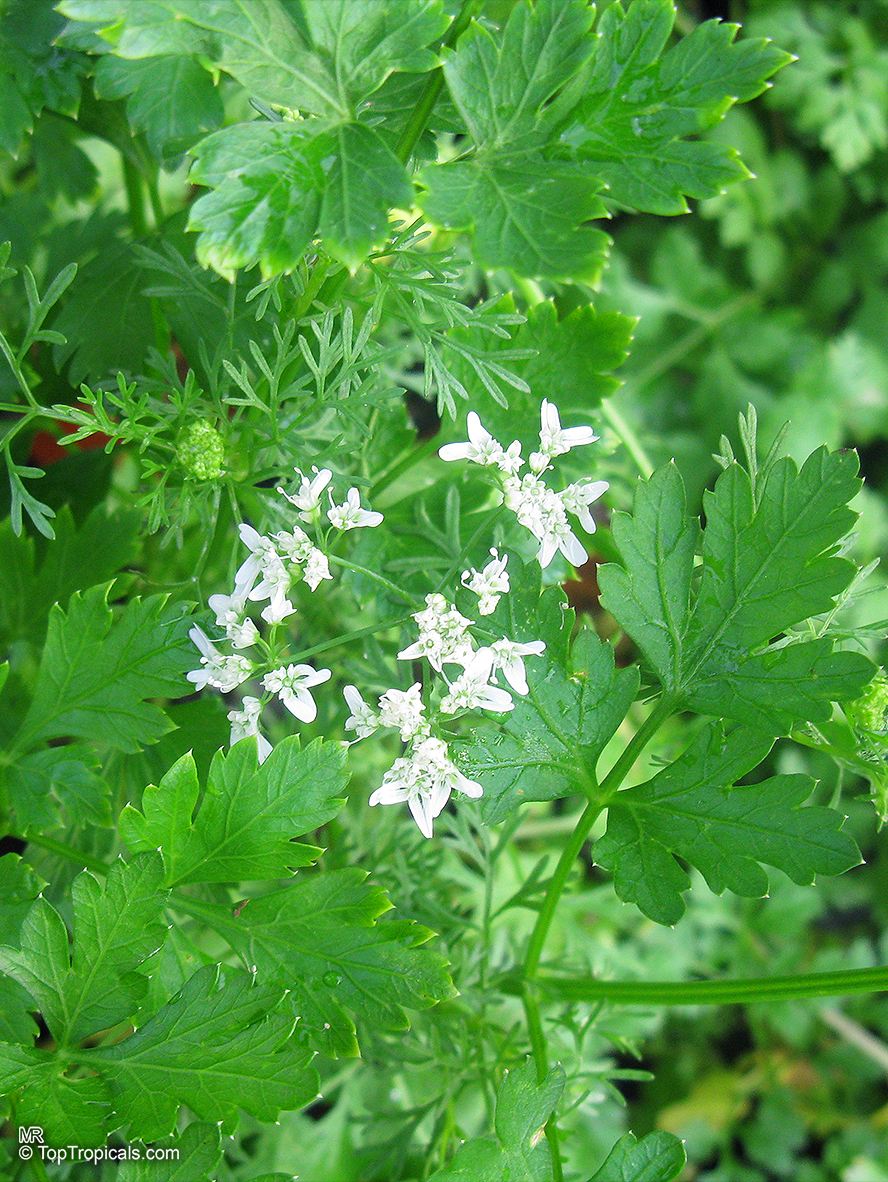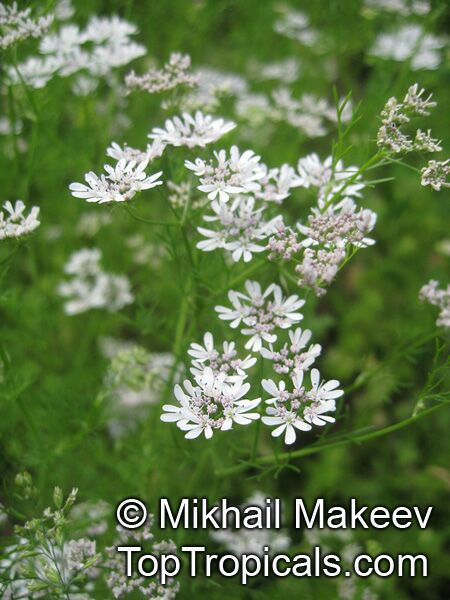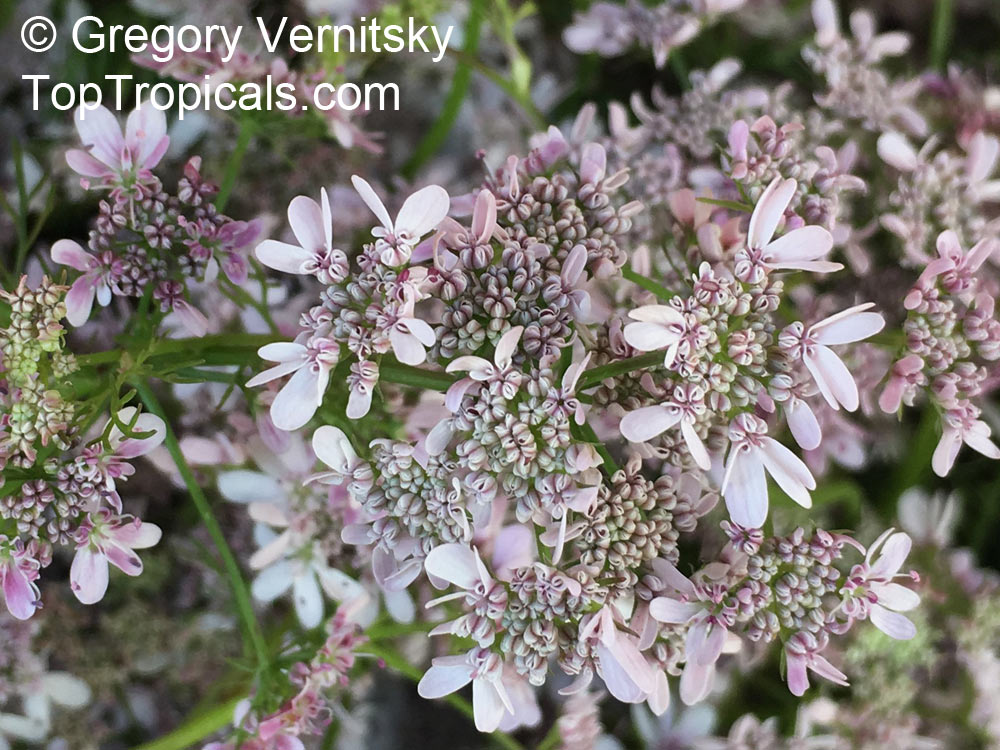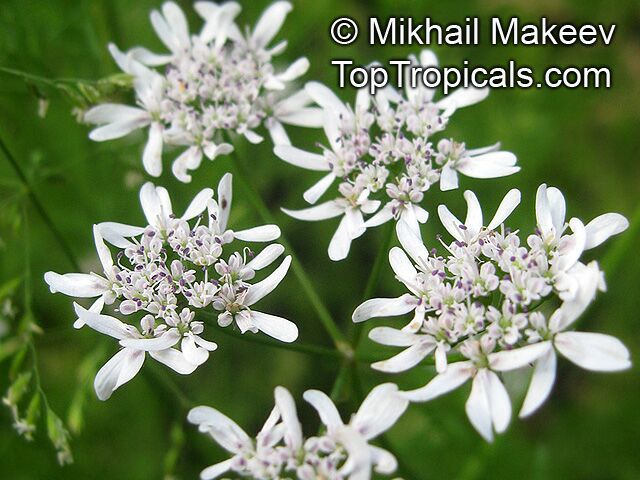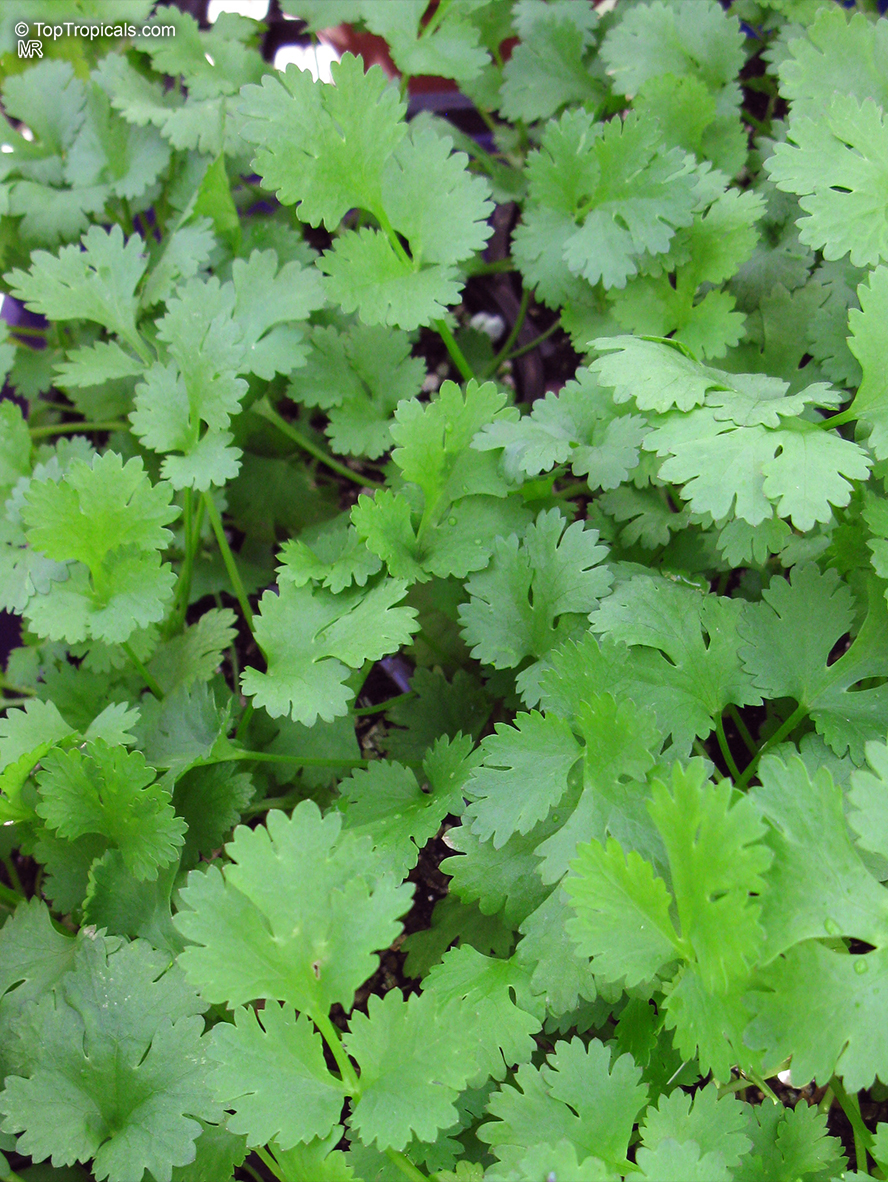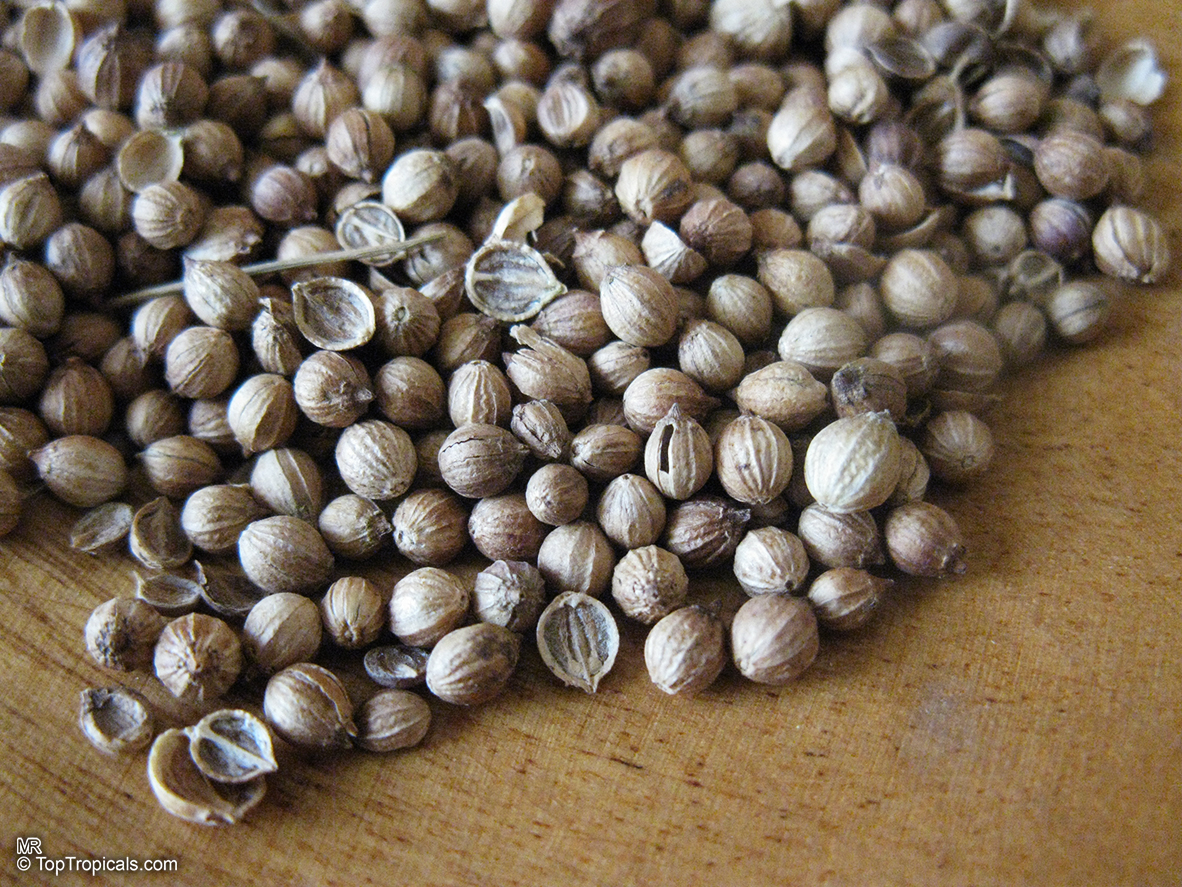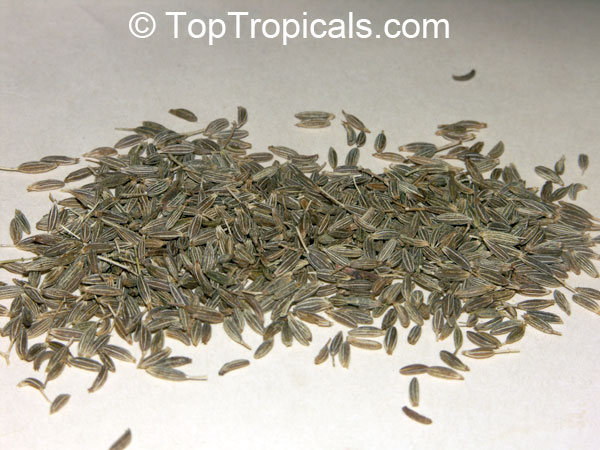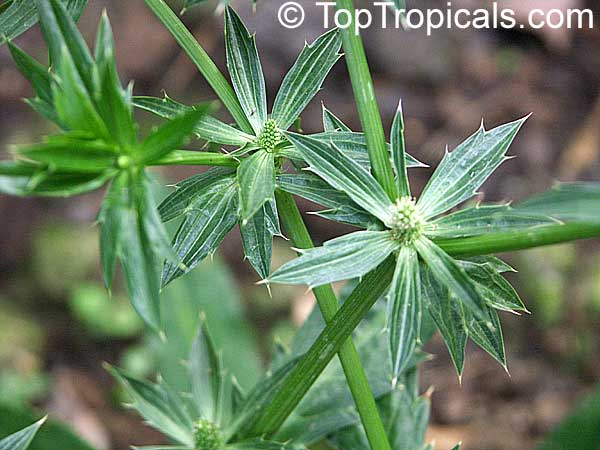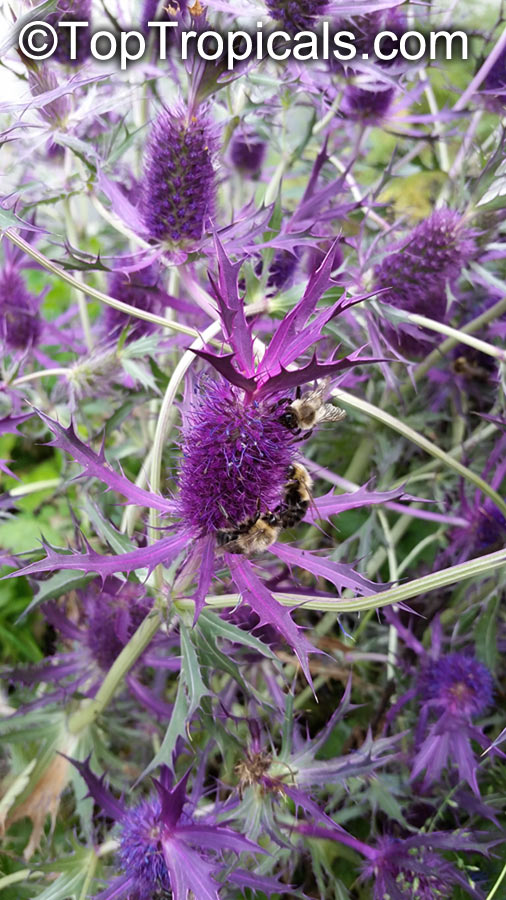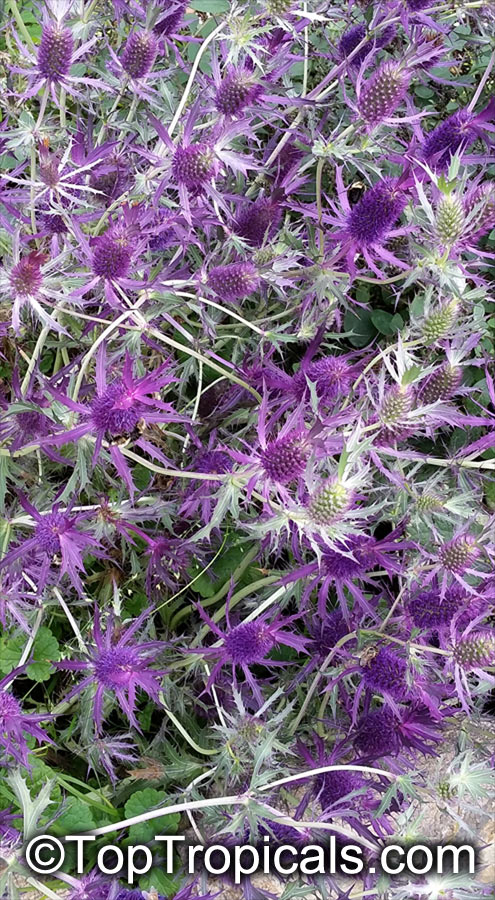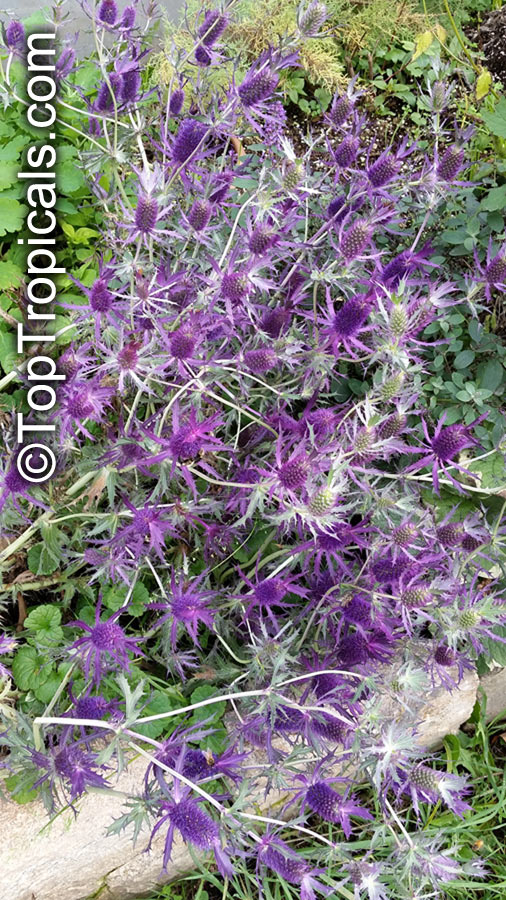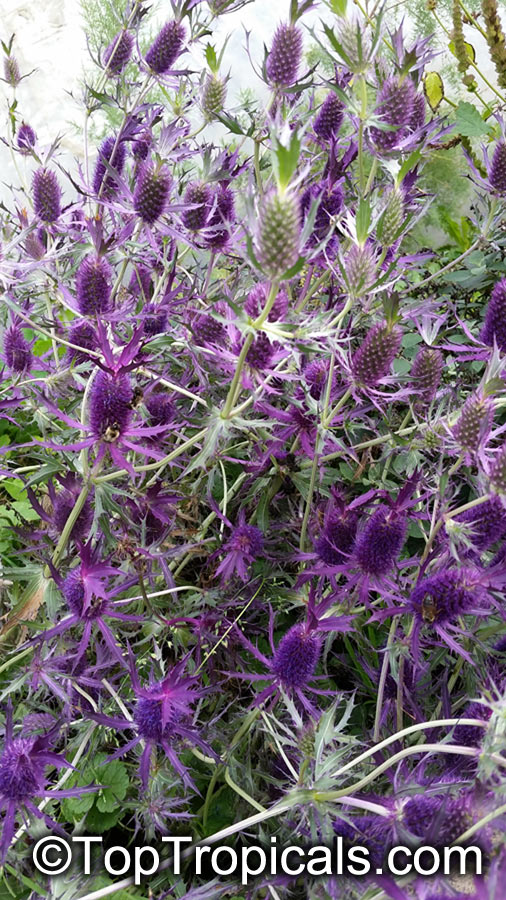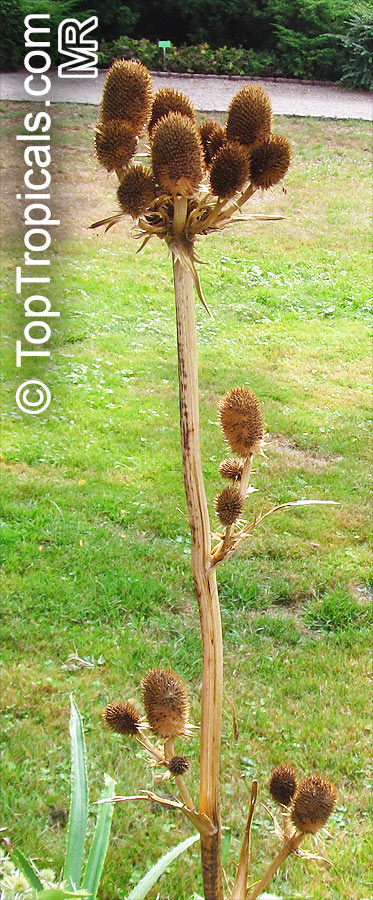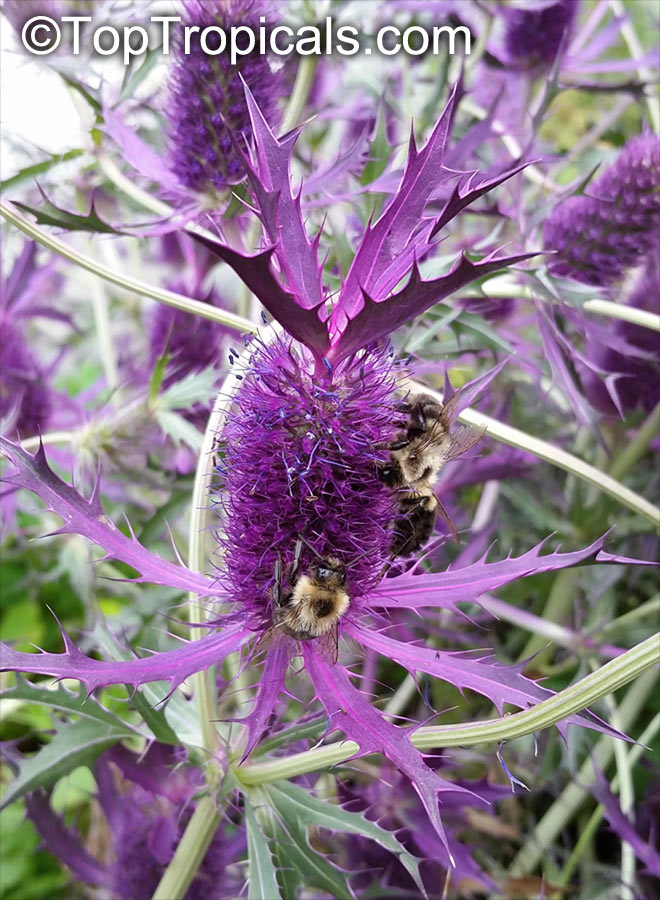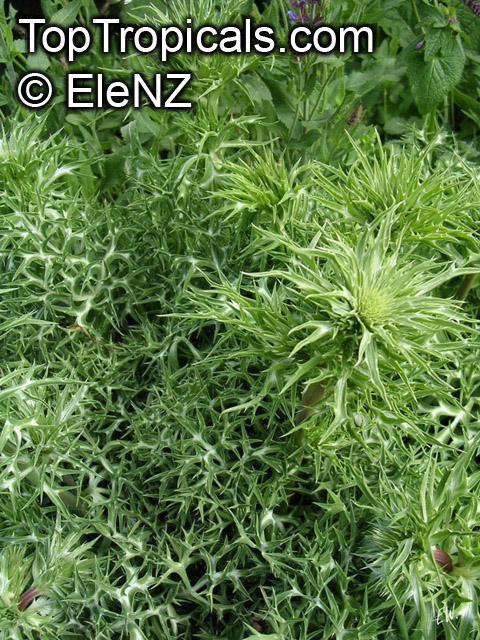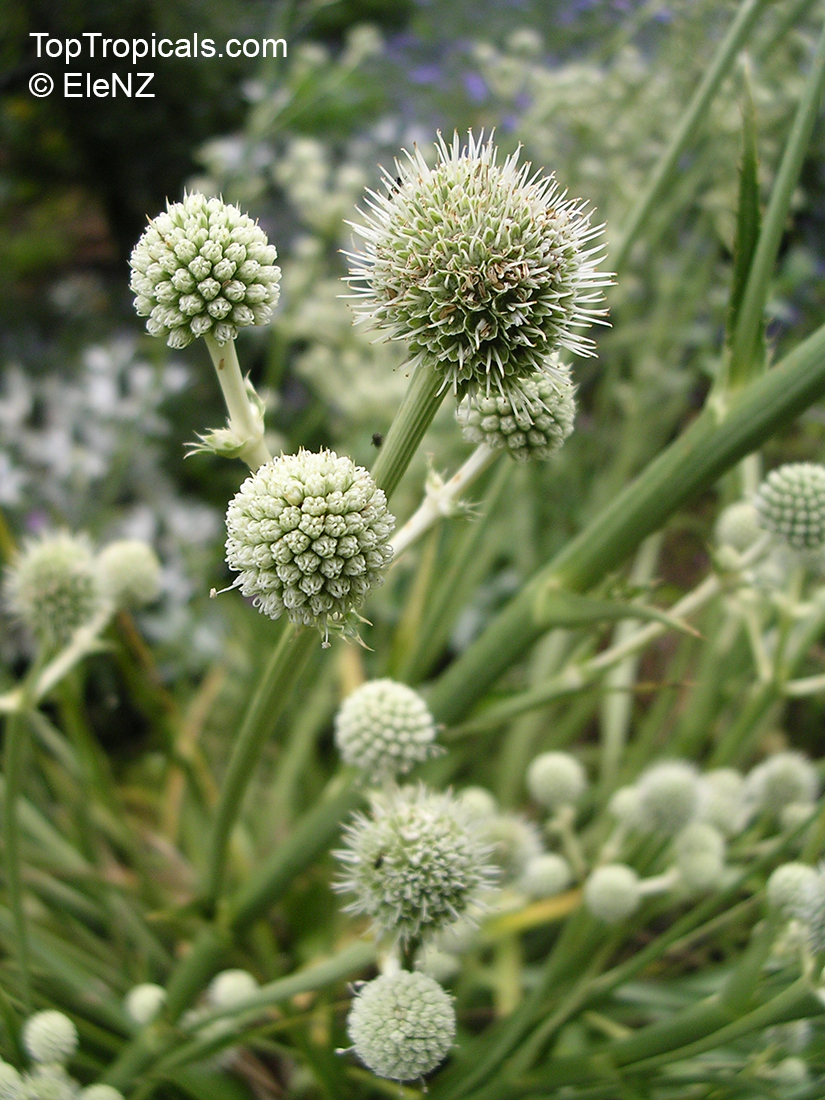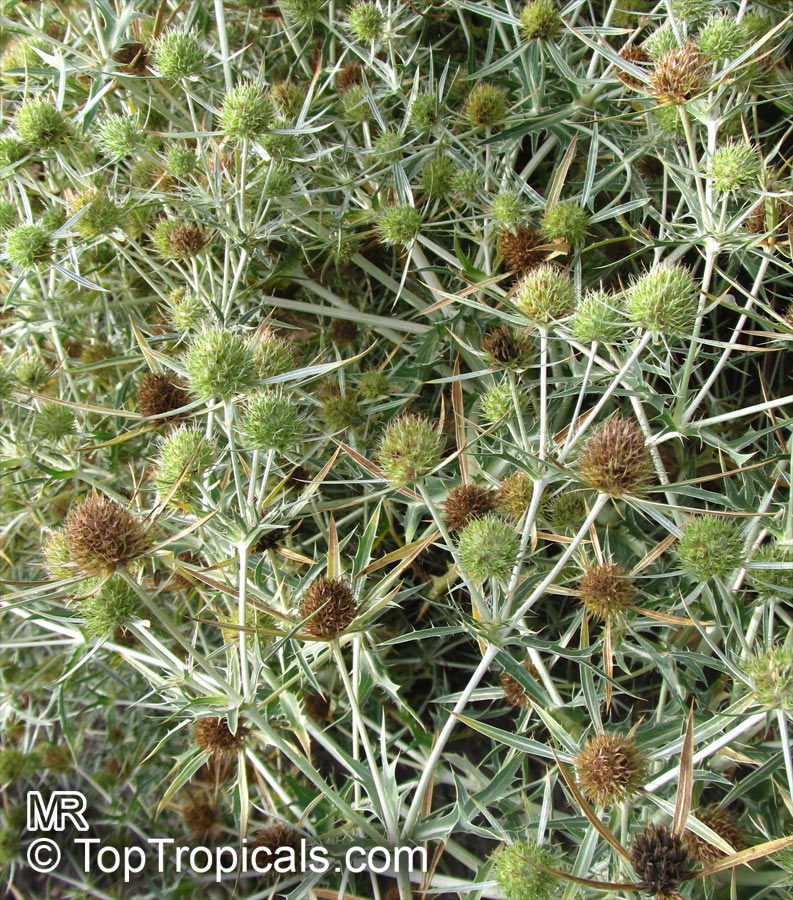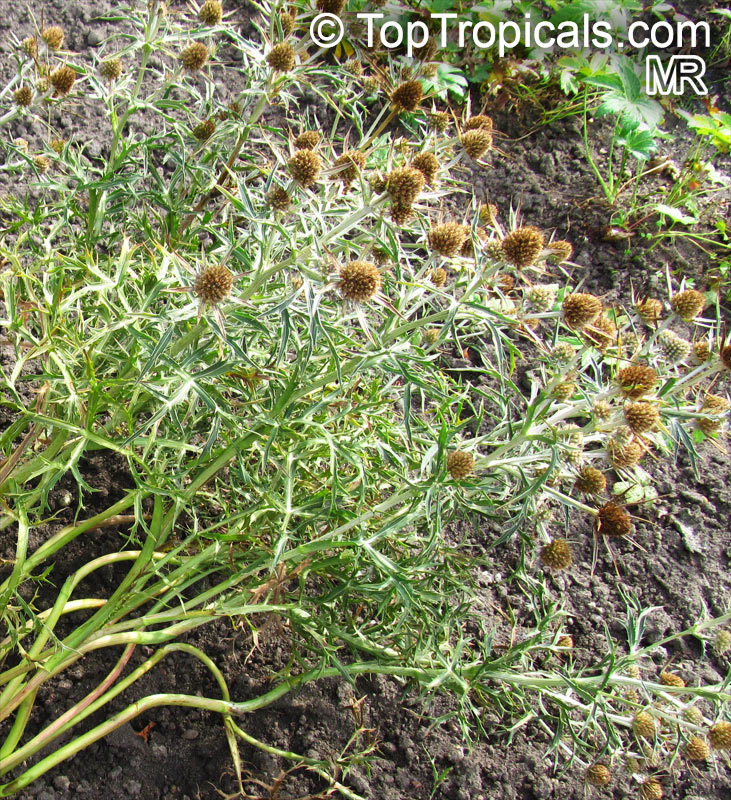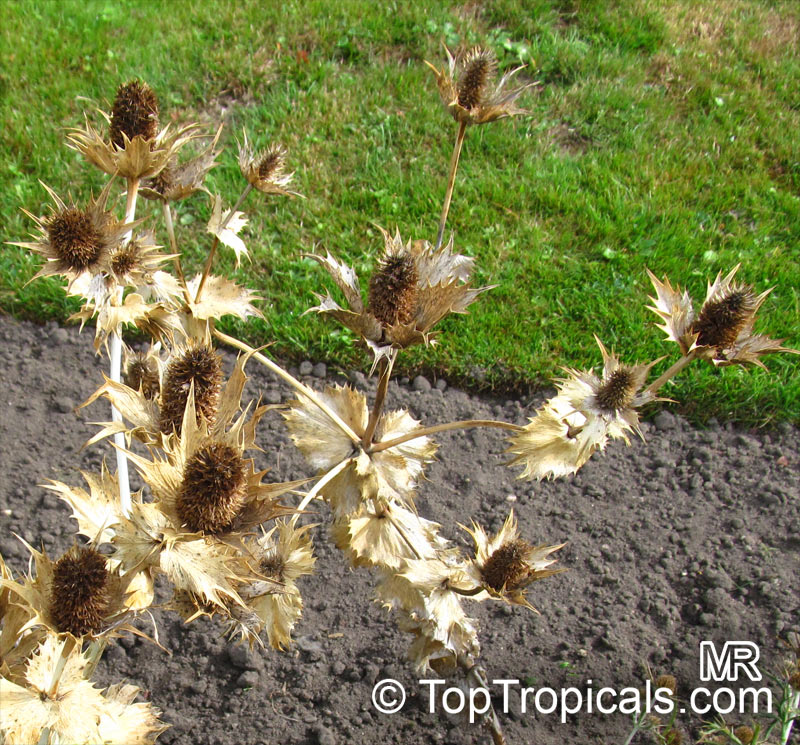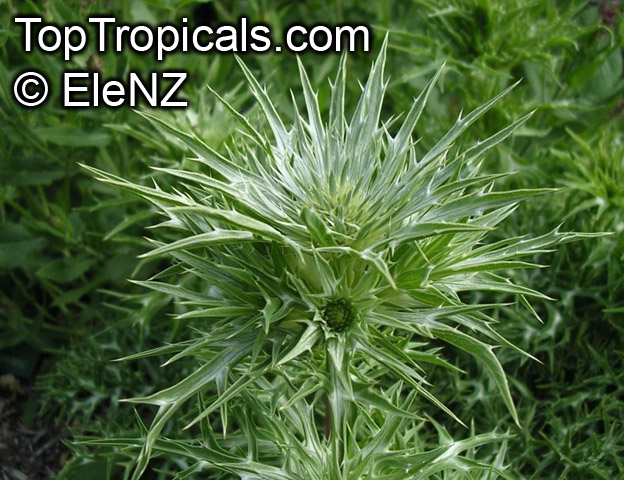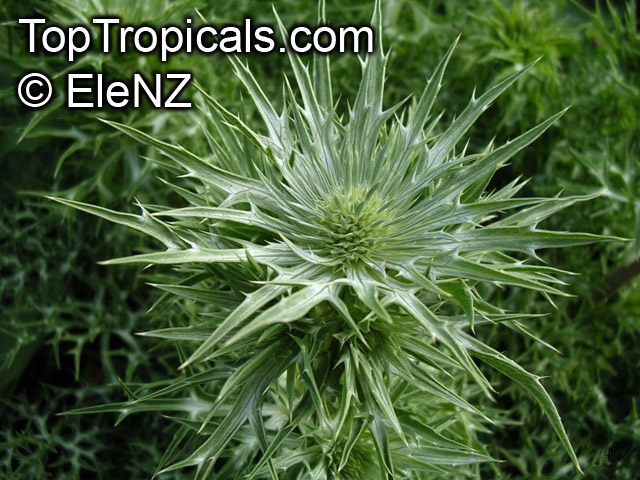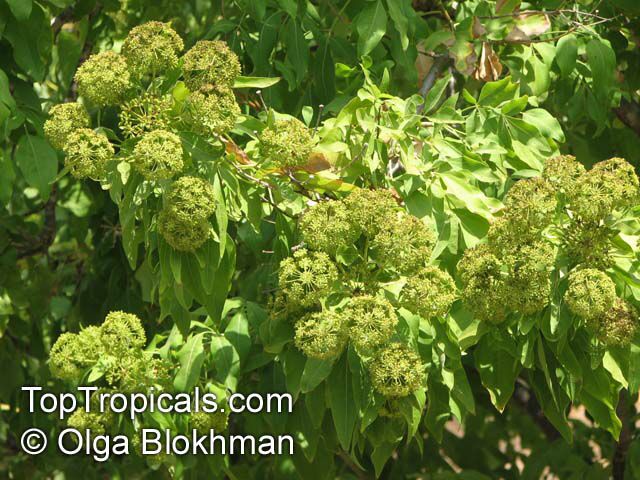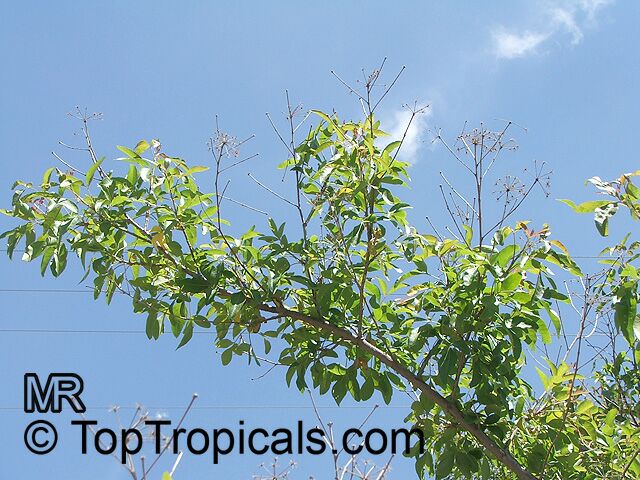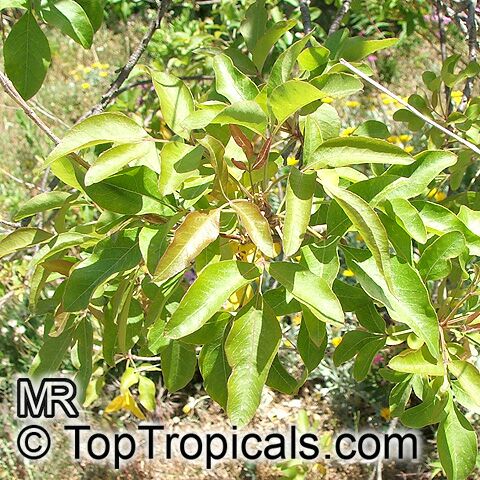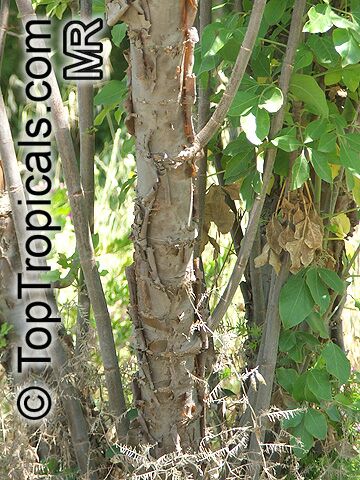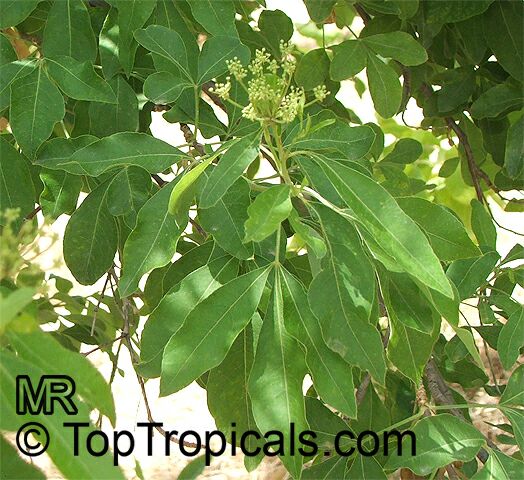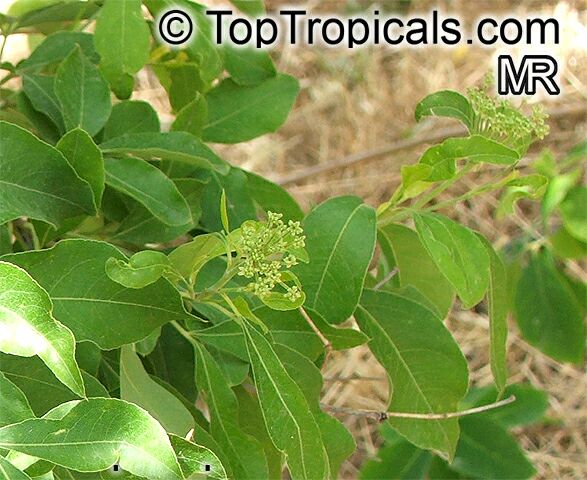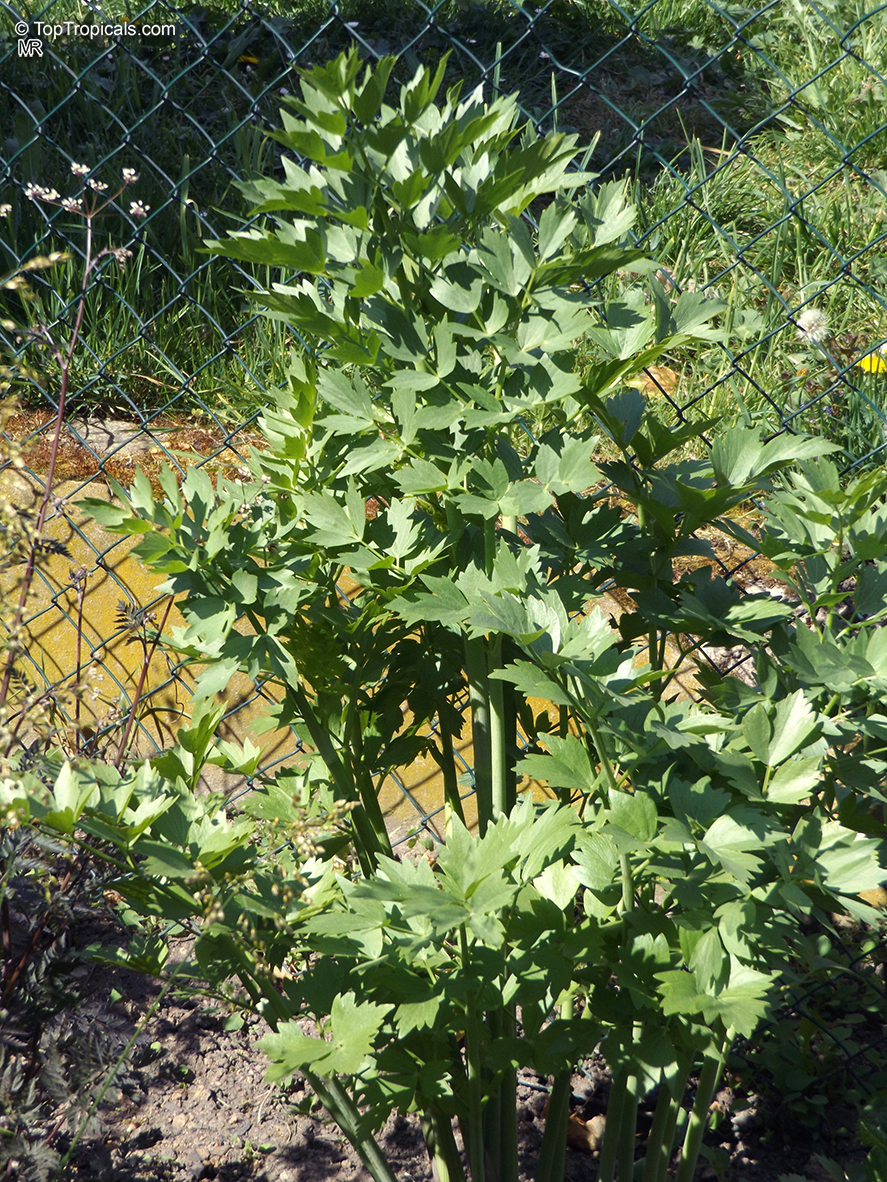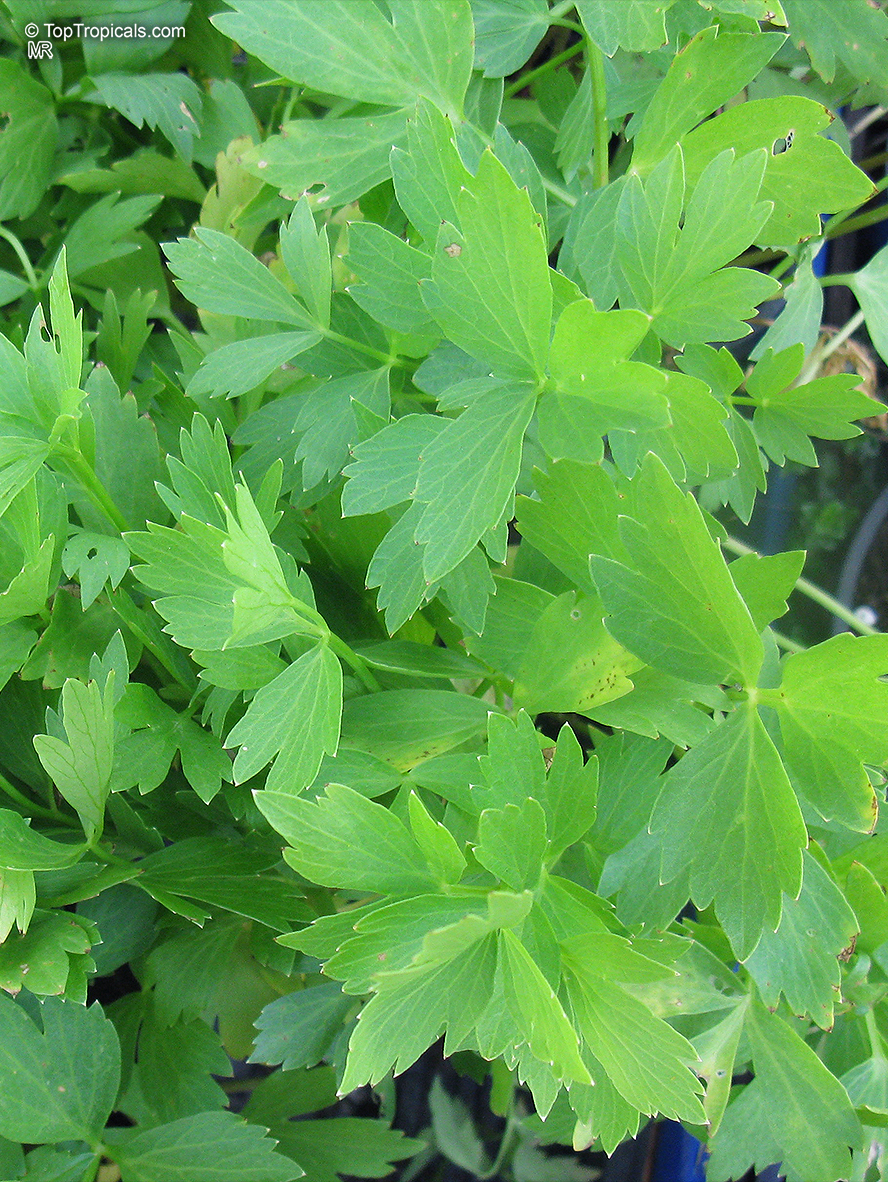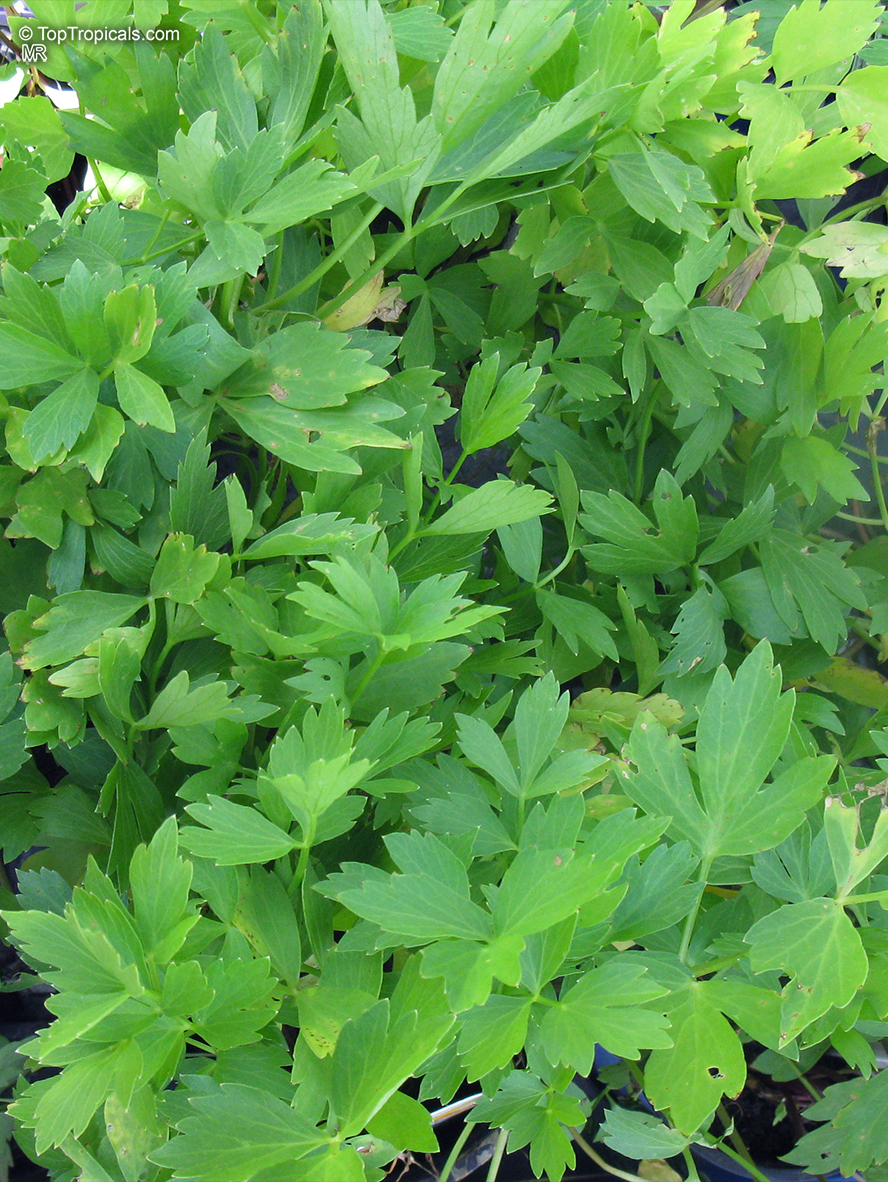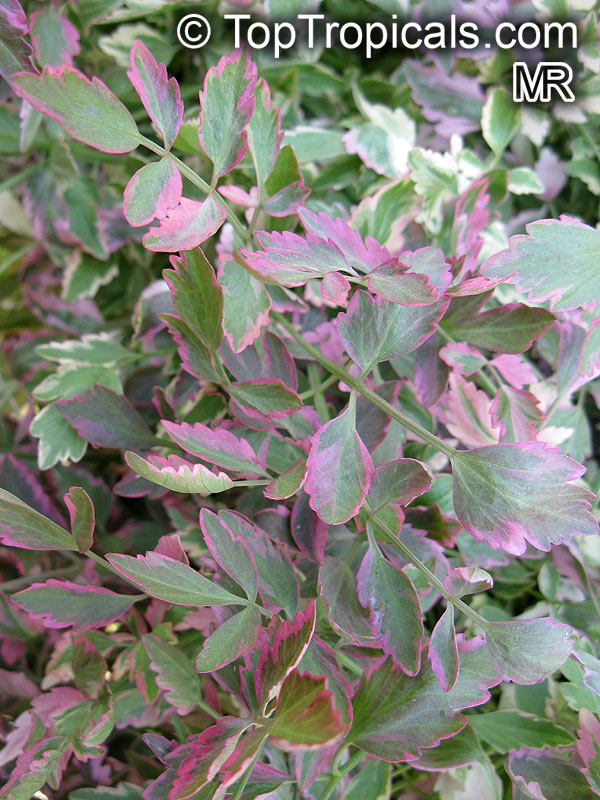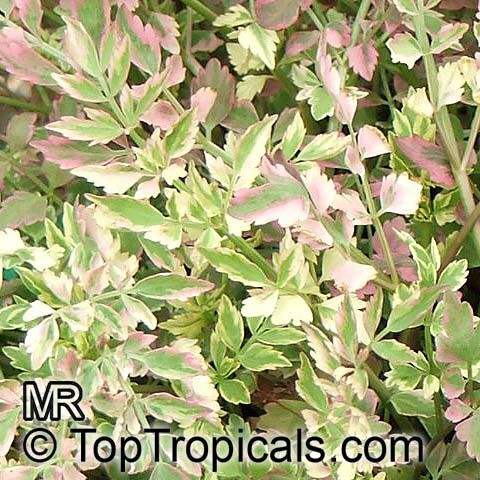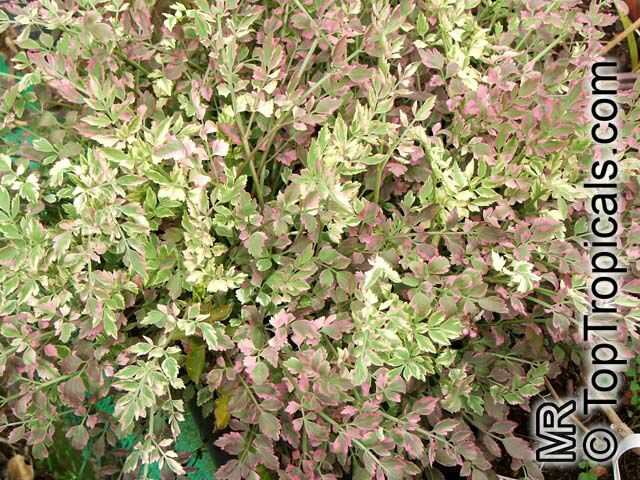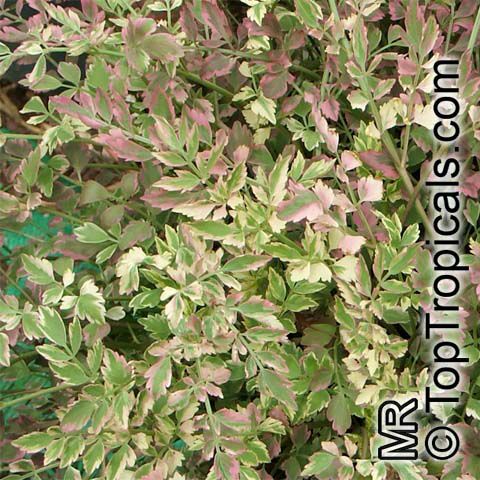Pictogram Guide · Mouse over pictogram for definition
Botanical family: Apiaceae / Umbelliferae
| Number of plants found: 12 | Next | 
|
Go to page: | 1 | 2 |
Anethum graveolens
DillFamily: Apiaceae / Umbelliferae
Origin: Eastern Europe











Dill is a short-lived perennial herb. It is the sole species of the genus Anethum, though classified by some botanists in a related genus as Peucedanum graveolens. The name dill comes from Old English dile, thought to have originated from a Norse or Anglo-Saxon word dylle meaning to soothe or lull, the plant having the carminative property of relieving gas. In Sanskrit, this herb is termed as Shatapushpa. In Semitic languages it is known by the name of Shubit. The Talmud requires that tithes shall be paid on the seeds, leaves, and stem of dill. The Bible states that the Pharisees were in the habit of paying dill as tithe. Jesus rebuked them for tithing dill but omitting justice, mercy and faithfulness. To the Greeks the presence of dill was an indication of prosperity. In the 8th century, Charlemagne used it at banquets to relieve hiccups and in the Middle Ages it was used in a love potion and was believed to keep witches away.
Fresh and dried dill leaves (sometimes called "dill weed" to distinguish it from dill seed) are used as herbs.
Like caraway, its fernlike leaves are aromatic, and are used to flavor many foods, such as gravlax (cured salmon), borscht and other soups, and pickles (where sometimes the dill flower is used). Dill is said to be best when used fresh, as it loses its flavor rapidly if dried; however, freeze-dried dill leaves preserve their flavor relatively well for a few months.
Dill seed is used as a spice, with a flavor somewhat similar to caraway, but also resembling that of fresh or dried dill weed. Dill seeds were traditionally used to soothe the stomach after meals. And, dill oil can be extracted from the leaves, stems and seeds of the plant.
Used in: Teas; seasoning for butter, cakes, bread, vinegars, soups, fish, pickles, salads, etc.; flowers in crafts.
Successful cultivation requires warm to hot summers with high sunshine levels; even partial shade will reduce the yield substantially. It also prefers rich, well drained soil. The seeds are viable for 3-10 years.
Angelica keiskei
Ashitaba, Tomorrows Leaf, KoidzumiFamily: Apiaceae / Umbelliferae
Origin: Japan
USDA Zone: 7-10?









Angelica keiskei, more popularly known as Ashitaba (meaning Tomorrow's Leaf) is an herbaceous, non-frost tender, perennial plant from the Angelica genus. It is endemic to Hachijō-jima, an island of Japan. The plant's additional cultivar epithet, koidzumi, is a nod to the botanist Genichi Koizumi, while the Japanese nomenclature of Ashitaba comes from its amazing regenerative capabilities. When a leaf at the break of dawn is harvested, a new sprout can often be seen growing overnight.
With a known traditional history of aiding in the healthier extended lives of the local residents, the plant's health benefits are attributed to its high levels of Vitamin B12, as well as the chalconoids that are found only in this particular species of Angelica.
Angelica keiskei is now mainly cultivated for use in regional cuisine in the forms of soba, tempura, tea and even ice-cream. It can be grown both in the wild and in containers, and it is best grown in moist soil in partially shaded areas, with sufficient water and fertilizer. Mature plants will reach a height up to 5 feet, and are best suited to warmer regions of USDA Zone 7-10. In colder climates, it is advised to quite simply grow plants in a sunny container and bring them to shelter during any cold weather.
This species is known to have a great deal of ethnomedical uses, both in traditional Chinese and Japanese herbal medicine, while also being highly sought-after in gardens due to its sweet-aromatic scent and colorful foliage. On top of this, Angelica keiskei can also be used as an herb or spice in regional cuisines, adding a great condiment ingredient, preservative and flavor enhancer.
In summary, Angelica keiskei is truly a unique plant and is worthy of being added to any garden.
Astrantia sp.
MasterwortFamily: Apiaceae / Umbelliferae
Origin: Europe
USDA Zone: 4-7?









Herbaceous perennial which has branched heads of neat pincushion flowers surrounded by a ruff of greenish white bracts in summer. It does best in a moist soil and will make good ground cover if planted as a group.
Coriandrum sativum
Coriander, Cilantro, KetumbarFamily: Apiaceae / Umbelliferae
Origin: Mediterranean
USDA Zone: 2-10?












Coriandrum sativum is an annual herb.
The lower leaves of coriander are lobed and look a little like parsley. The upper leaves are finely dissected into linear segments and almost fernlike. The flowers are borne in small umbels, white or very pale pink, asymmetrical.
Fresh leaves (Cilantro) provide an exotic tang in Asian dishes. The dried seeds (Ketumbar) are used in curry powders, chutneys, confectionery, cakes and sauces.
Cuminum cyminum
CuminFamily: Apiaceae / Umbelliferae
Origin: Mediterranean to East India
USDA Zone: 5-10?










Cumin seeds are used in the cuisines of many different cultures. It is the second most popular spice in the world after black pepper. Cumin's distinctive flavor and strong, warm aroma is due to its essential oil content.
Cultivation requires a long, hot summer of 3-4 months; it is drought-tolerant, and is mostly grown in Mediterranean climates. It is grown from seed, sown in spring, and needs fertile, well-drained soil.
Eryngium foetidum
Fitweed, Culantro, Long coriander, Mexican corianderFamily: Apiaceae / Umbelliferae
Origin: Caribbean









Fitweed is an annual tropical herb, indigenous to the Amazon rainforest and other tropical areas of the Americas. It grows best under moist, shaded conditions near cultivated areas. Culantro or long coriander as it is called, is often mistaken for its relative, coriander (cilantro). Fitweed is a herb with a pungent odor; the leaves have toothed margins and they grow in a basal rosette pattern. Culantro is rich in iron, carotene, riboflavin and calcium. This plant is widely used as food flavoring and seasoning herb for dishes and chutney in the Caribbean; it is popular in Asia for food use. Culantro has also applications in herbal medicine: as a tea for diarrhea, flu, fevers, vomiting, diabetes and constipation. Propagation: seeds. Grown in shady and moist spots, well drained soil. Can be planted in pots for indoor use in the cooler zones.
Levisticum officinale
Lovage, Love ParsleyFamily: Apiaceae / Umbelliferae
Origin: Central Asia
USDA Zone: 4-8?












Levisticum officinale is a tall (3 to 9 ft) perennial plant, the leaves and seeds or fruit of which are used to flavor food. The root is used as a diuretic.
Levisticum officinale has attractive foliage and can be used as a back-of-the-border plant.
Oenanthe javanica
Water Celery, Water Parsley, Water DropwortFamily: Apiaceae / Umbelliferae
Origin: Eastern Asia









The flavor is reminiscent of carrots or parsley. A major vegetable in many parts of the Orient, the leaves are a rich source of vitamins and minerals.
Oenanthe javanica Flamingo - a variegated form with leaves splashed and zoned pale pink, cream and white, it has been especially recommended as a good ground cover plant for wet situations.
Although no specific mention of toxicity has been seen for this species, it belongs to a genus that contains a number of very poisonous plants and so some caution is advised.
| Next |  |
Use link to repeat this search:
https://toptropicals.com/cgi-bin/garden_catalog/cat.cgi?search_op=and&keyword_op=and&language=e&family=Apiaceae / Umbelliferae
&number=10&no_change_lang=1&user=tt&sale=1&first=0
